

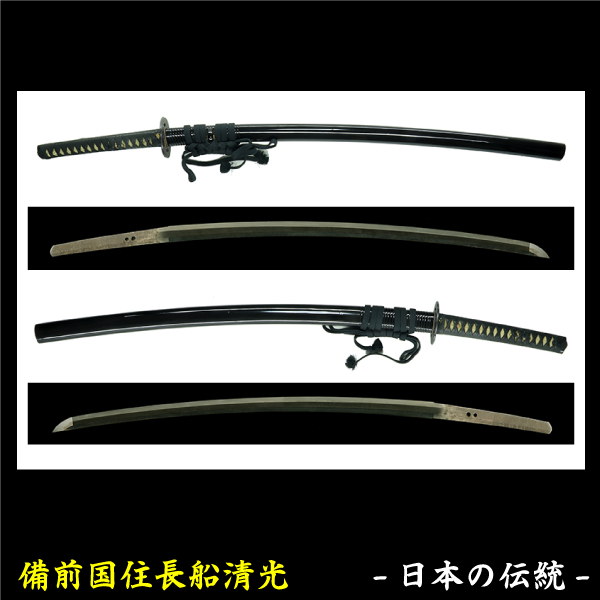



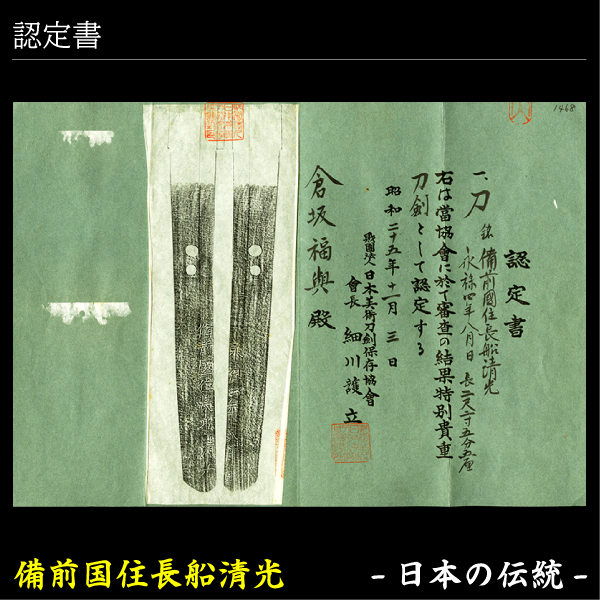
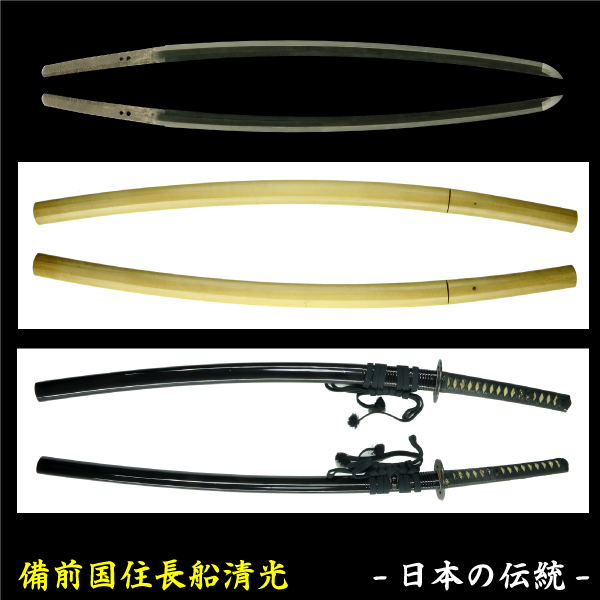
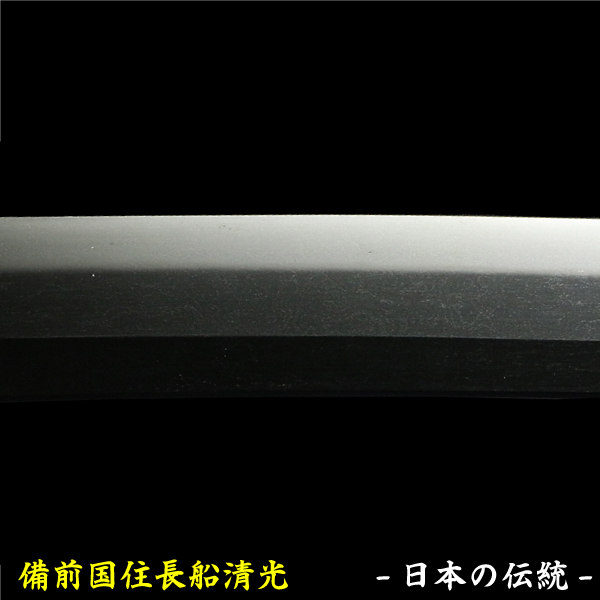
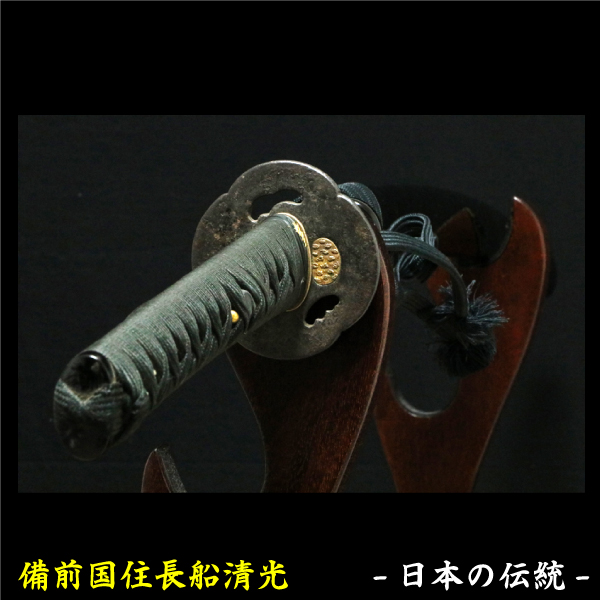
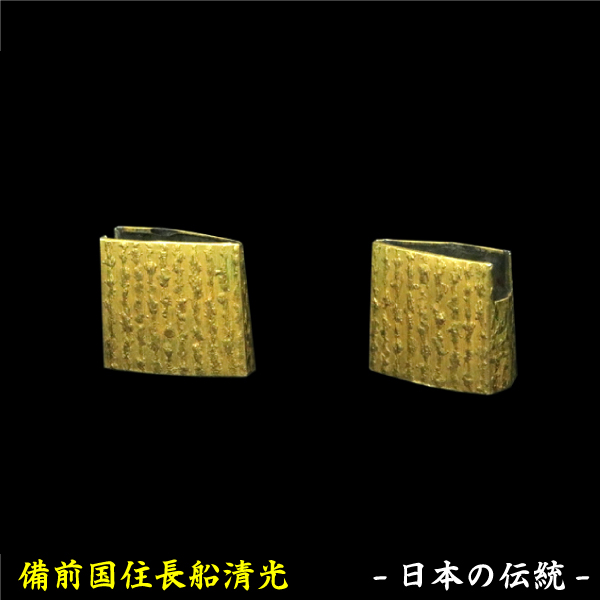
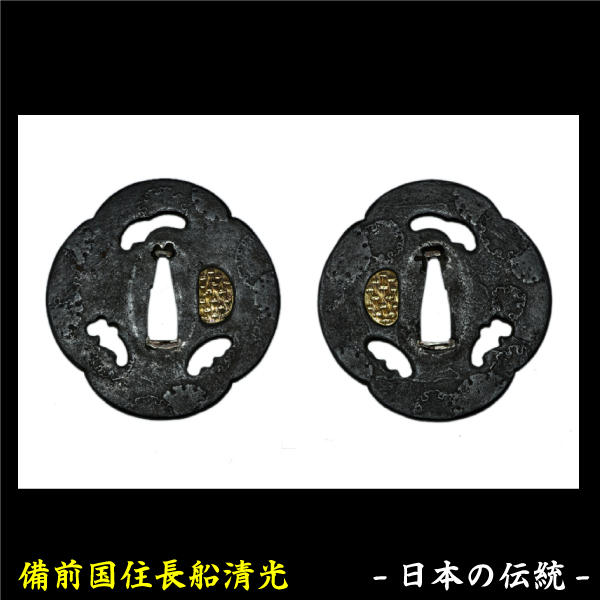
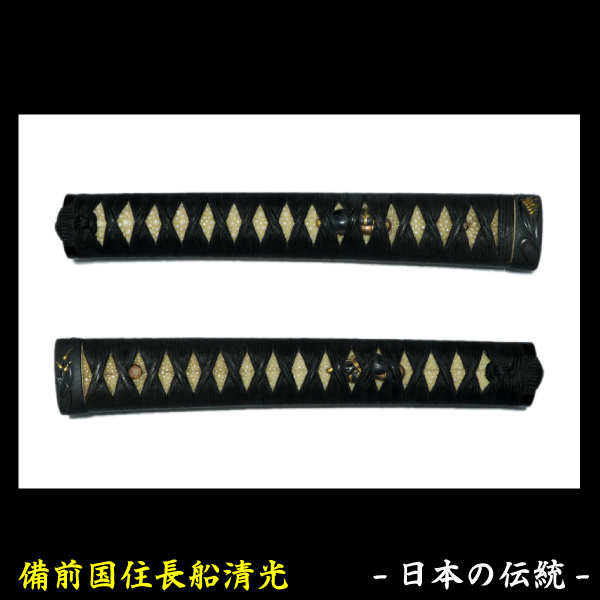
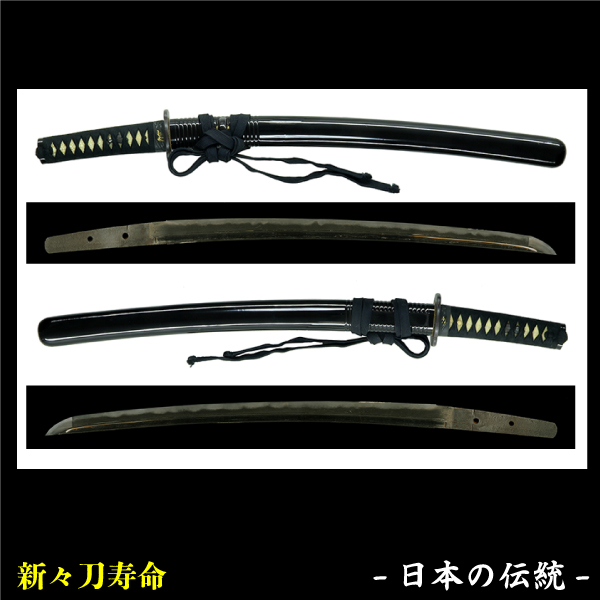
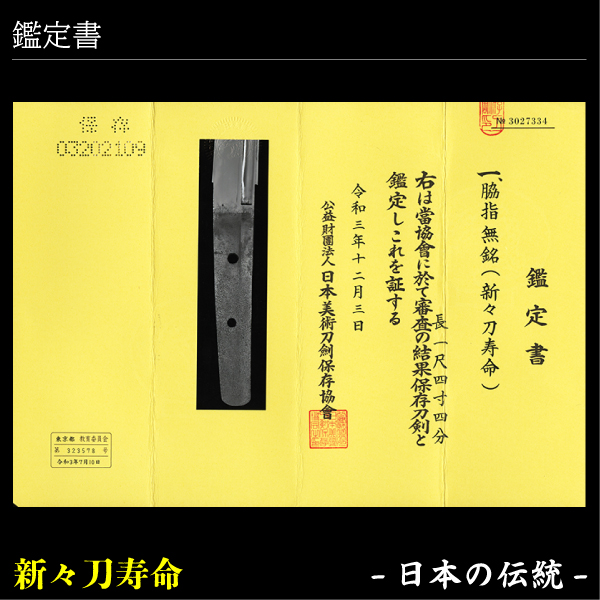


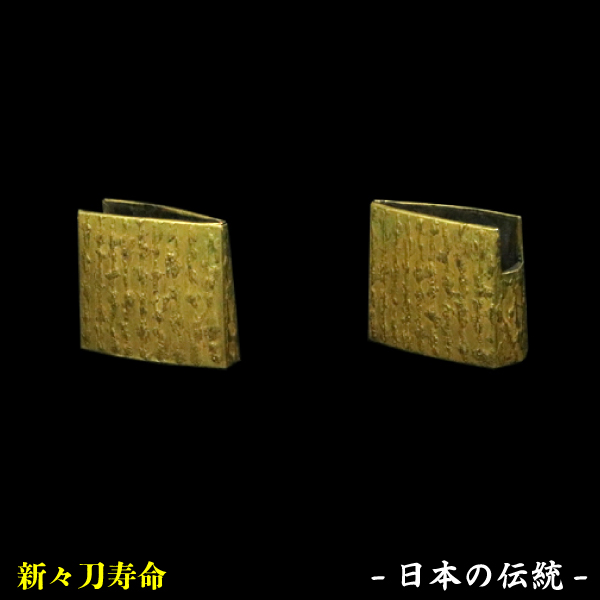
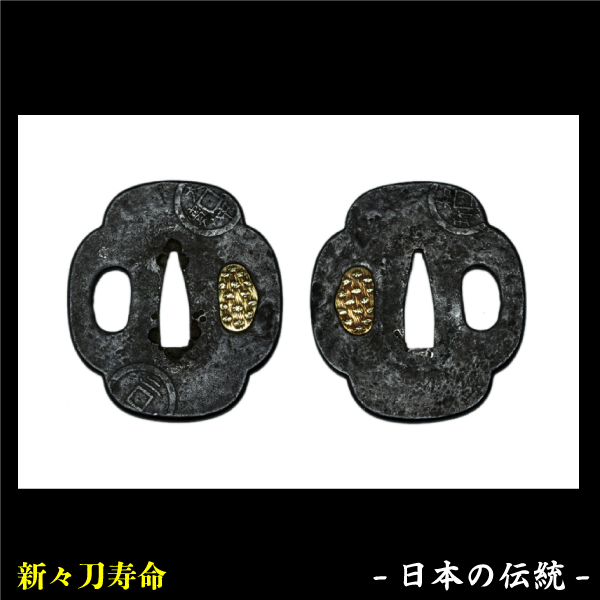
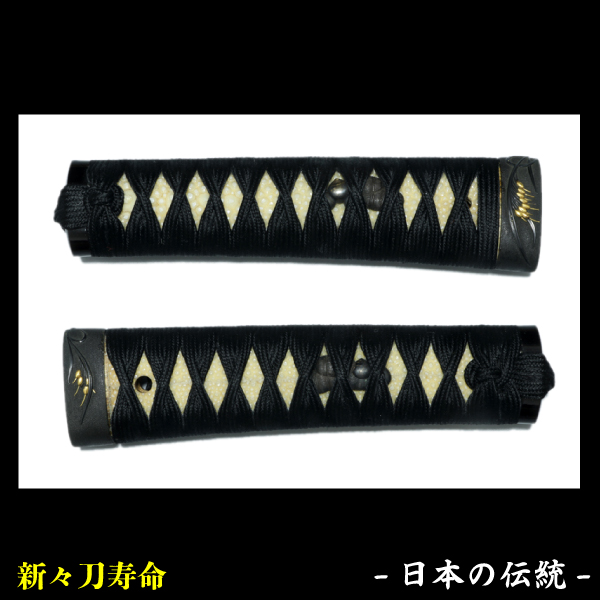
ご注文ありがとうございました
日本刀は、日本特有の鍛刀方法で作られた刀剣類の総称です。
その大きな特長は、刀身に反りがあること、そして片側だけに刃が付けられていることにあります。平安時代末期頃に出現したこのような形式を持つ刀が、「日本刀」と呼ばれています。
日本刀は刀身の寸法によって、たち、うちがたな、わきざし、たんとうの4つに分類されるのが基本。
さらに広義では、なぎなた、やり、ながまき、なども日本刀に含まれます。
"The Japanese sword, or Nihontō, is a general term for swords made using unique Japanese sword-making techniques. Its major characteristics include a curved blade and a sharp edge on only one side. Swords of this type, which appeared around the end of the Heian period, are referred to as 'Japanese swords'.
In principle, Japanese swords are classified into four categories according to the length of the blade: Tachi, Uchigatana, Wakizashi, and Tantō.
Furthermore, in a broader sense, Naginata, Yari, and Nagamaki, among others, are also included in the category of Japanese swords."
| 品番Code | swords2 |
|---|
【おすすめポイント】
太刀、脇差しの大小揃いとなります。
拵えが同デザインで現代までこの大小揃いで残っているのは貴重なものとされております。
【備前國住長船清光】
≪説明≫
室町時代後期、勝光と並び備前長船鍛冶の双璧と称される清光の作品。
長船清光は勝光・忠光らと並び「末備前」と呼称される室町時代後期の備前鍛冶を代表する名工である。
末備前中、同じ清光の銘を名乗る刀工は数多いが、俗名を冠した物は注文打として作成された入念作であるとされ、
特にその中でも五郎左衛門尉・孫右衛門尉の両名が最上工として知られている。
In the late Muromachi period, the works of Kiyomitsu, who is acclaimed alongside Katsumitsu as one of
the two greatest master swordsmiths of Bizen Osafune. Osafune Kiyomitsu is known as a distinguished master,
representing the Bizen swordsmiths of the late Muromachi period, also referred to as the "late Bizen" alongside Katsumitsu and Tadamitsu.
Among the "late Bizen", there are many swordsmiths who go by the same name, Kiyomitsu. However,
those that bear a common name are believed to have been meticulously made as custom-order pieces. In particular,
among these, those known by the two names of Gor?zaemon no J? and Magouemon no J? are known as the finest craftsmen.
| 商品名 | 日本刀 太刀 備前國住長船清光 |
| 原料 | 玉鋼 |
| 銘文 (Signature and Date) | (表)備前國住長船清光 (裏)永禄四年八月日 |
| 登録 (Registration Code) | 昭和26年3月31日 群馬 第1002号 |
| 刃長 (Blade length) | 682.5mm |
| 反り (Curvature) | 24mm |
| 元幅 (Width at the bottom part of blade) | 30.8mm |
| 先幅 (Width at the top) | 22.4mm |
| 元重 (Thickness at the bottom part of blade) | 8.1mm |
| 先重 (Thickness at the top) | 5.4mm |
| 重量 (Weight) | 刀身:884g (gblead just:884g) 抜身:1,175g (unsheathed sword 1,175g) |
| 時代 (age) | 室町時代 後期 |
| 広告文責 | 株式会社MSD 03-3527-9930 |
| 古物商許可証 | 東京都公安委員会 第301042316594号 |
 |
 |
 |
 |
 |
 |
 |
 |
 |
 |
 |
 |
 |
 |
 |
 |



| 商品名 | 日本刀 脇差 新々刀寿命 |
| 原料 | 玉鋼 |
| 銘文 (Signature and Date) | 無銘新々刀寿命 |
| 登録 (Registration Code) | 令和3年7月10日 東京都 第323578号 |
| 刃長 (Blade length) | 436mm |
| 反り (Curvature) | 10mm |
| 元幅 (Width at the bottom part of blade) | 28.2mm |
| 先幅 (Width at the top) | 19.3mm |
| 元重 (Thickness at the bottom part of blade) | 5.8mm |
| 先重 (Thickness at the top) | 4.4mm |
| 重量 (Weight) | 刀身:360g (gblead just:360g) 抜身:570g (unsheathed sword 570g) |
| 時代 (age) | 江戸時代 末期 |
| 広告文責 | 株式会社MSD 03-3527-9930 |
| 古物商許可証 | 東京都公安委員会 第301042316594号 |
 |
 |
 |
 |
 |
 |
 |
 |
 |
 |
 |
 |
 |
 |
 |
|

